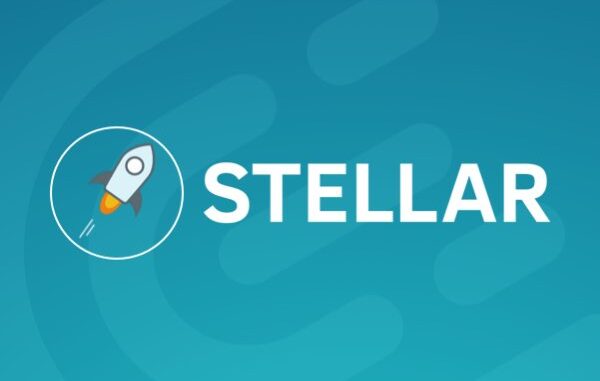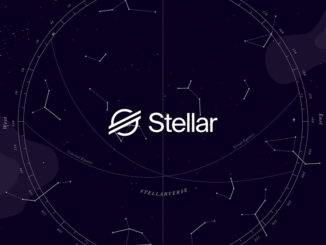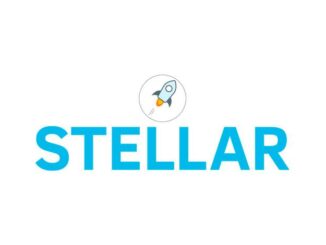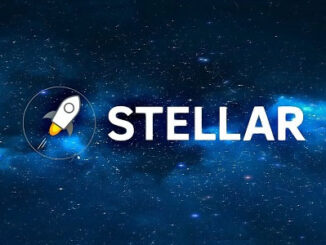
Stellar (XLM) is a vast open-source platform based on a publicly available and distributed blockchain network with its own cryptocurrency called Stellar Lumens (or simply: Lumen).
Stellar cryptocurrency’s mission is to create financial products and services that connect people from around the world, including those who currently do not have access to banking services. The Stellar platform provides users with an efficient payment network that allows for any transaction with immediate confirmation and virtually zero fees.
The platform also allows issuing tokens and organizing fundraisers, among other things in the form of ICOs. The Stellar platform also has a decentralized stock exchange (DEX), which supports not only the most popular cryptocurrencies (such as Bitcoin and Litecoin), but also fiduciary currencies (including US dollars and euros).
The name of the platform Stellar comes from the English adjective “stellar,” and the cryptocurrency itself got its name from the basic unit of measurement of light flux – lumens.
Stellar Lumens is an inflationary cryptocurrency (a constant inflation rate of 1% per year), with no limit on the maximum supply of coins. At the launch of the network (July 2014), exactly 100 million XLMs were created, and the total number of lumens now exceeds 104 million, but there are less than 19 million units of this cryptocurrency on the digital market.
History of the development of the cryptocurrency Stellar
The history of Stellar’s platform development began in 2014, when developer Jed Caleb and lawyer Joyce Kim launched a website called “Secret Bitcoin Project,” through which they tested software testers for their platform.
At the time, Jed Caleb was not only a seasoned Internet entrepreneur who created the decentralized file sharing network eDonkey in 2000, but also had extensive experience in the cryptocurrency industry. Since 2010, he founded the infamous cryptocurrency exchange Mt.Gox, which became famous for its subsequent spectacular collapse.

Since 2012, Jed Caleb has co-created the decentralized settlement platform Ripple (XRP). The Stellar platform also began working with startup Stripe, offering the latter online payments. Stripe’s CEO Patrick Collison, along with two of Stellar’s network creators, founded a non-profit organization called the Stellar Foundation, which aims to develop the XLM platform and provide access to financial services in regions of economic exclusion.
Of the initial 100 million XLM units created, 2 million were given to the Stripe startup and 25 million tokens were earmarked for the social mission of economically integrating people without access to banking services.
Standalone Consensus Protocol (SCP) on the Stellar network
The XLM network was launched on July 31, 2014 and was originally based on the source code of the Ripple platform, which was previously developed by Jed Caleb. During the first half of the year, more than 3 million users registered on the Stellar network, and the market capitalization of this cryptocurrency exceeded $15 million.
However, in December 2014, there were numerous technical mishaps related to problems reaching consensus between the nodes of the Lumens network, which even led to an unplanned separation of the blockchain system. The solution to the problem was that Jed Caleb abandoned the consensus algorithm used in the Ripple network and developed an autonomous consensus protocol (SCP). This development involved cryptography professor David Meseris of Stanford University.
The new source code was published in April 2015, and the Stellar network was updated on November 5, 2015. The code update not only fixed the system’s problems, but also improved the network’s performance and security.
Commercial Division of the InterStellar Project
In May 2016, the XLM platform launched its first large-scale collaboration with many companies, including the creation of an international settlement network for the Deloitte Group called Deloitte Digital Bank. In May 2017, a commercial division of the lightyear.io project (InterStellar) was created.
InterStellar includes the decentralized exchange StellarX, where it is possible to trade not only cryptocurrencies, but also fiat currencies and almost all assets in the form of digital tokens.
Characteristics of the cryptocurrency Stellar (XLM)
The Lumens network is capable of processing payments in a fixed currency. The platform also has its own digital currency called Lumens, which is used to pay for transactions on the network.
The XLM network is not based on a consistent Proof of Work algorithm, which means that there are no miners on the network, as, for example, on the bitcoin platform. Nodes in the Lumens network do not earn commissions for transactions, but rather place information about the transactions in the so-called Inflation Pool, which is responsible for cyclical increase of the maximum delivery of XLM.
On the Stellar network, each account must have a minimum base reserve of 0.5 XLM. The fee for network transactions is pre-set, and network users cannot change it. This fee is 100 Stroop (0.00001 XLM) for each transaction made, making XLM one of the cheapest cryptocurrencies in terms of transaction costs. Stroop is the smallest unit of lumens, similar to satoshi (1 Stroop = 0.0000001 XLM).
The transaction confirmation time in the XLM network is, on average, 3 to 5 seconds (similar to the block creation time in the network).
Currently, the Lumens network can handle more than a thousand transactions per second (TPS), which is an impressive result compared to, for example, the bitcoin platform (about 10 TPS).
Stellar’s developers are working all the time on additional payment channels and the implementation of the Lightning Network protocol, which will further increase the scalability of the “star” network.
All transactions in the Lumens network are fully open, and organizations that want to connect their services to this blockchain must implement procedures to verify the personal data of system users (KYC).
Assets in the form of a digital token in the “star network”
One of the unique features of the Lumens network is its practical ability to create markets based on all types of financial instruments. On the Stellar network, you can create any asset in the form of a digital token. This allows you to exchange currencies, securities, commodities or even create tokens used in fundraising through ICOs.
The star system also has Anchor trusts that accept deposits, such as in fiduciary currencies, which are then issued in the form of digital tokens. At the time of payment for a particular asset from Anchor, the corresponding tokens are destroyed. In theory, any organization could integrate its services with the star network using an off-the-shelf server bridge.
It is worth noting, however, that the structure of the Stellar network is only partially decentralized, which ensures its high scalability and extremely fast transactions with virtually zero fees. Nevertheless, this system is certainly not in direct competition with decentralized networks such as the bitcoin blockchain.
What kind of Stellar wallet is suitable for “star” lumens?
Lumens token is supported by many cryptocurrency wallets available for various devices and operating systems.
The main desktop portfolio for XLM is Foxlet Stellar Wallet, available for Windows, MacOS and Linux operating systems. A universal solution is the BlockEQ Wallet, which is available for both computers (without Linux support) and smartphones (Android and iOS). Both wallets are also compatible with all tokens in the Stellar network.
A popular mobile Stellar wallet is Lobstr Wallet, available for Android and Apple systems. A mobile wallet for Android devices is also offered by the decentralized Interstellar Exchange, indirectly owned by the Stellar team.
We also invite XLM users to try our simple and free Stellar web wallet, or choose one of the hardware wallets.
Most Stellar wallets have built-in integration with Stellar’s decentralized exchanges (DEX).
XLM is also supported by the more popular Ledger hardware wallets, the Nano S and Blue (but without support for the Ledger Live desktop app) and Trezor (Model One and Model T).
Star Lumens are listed on 36 cryptocurrency exchanges. The largest turnover (about 30% of total sales) occurs on the Binance exchange, paired with bitcoins (XLM / BTC). A notable share of this cryptocurrency turnover also comes from South Korea (in tandem with the Korean won – XLM / KRW) on the stock exchange Upbit, not available to customers outside the country.
XLM is also available on the most popular cryptocurrency exchanges such as Kraken, OKEx, Bitfinex or Polonix. In mid-July 2018, the Coinbase stock exchange announced plans to introduce XLM on its platform, which increased the price of this cryptocurrency (as it did, for example, with Ethereum Classic or Basic Attention Token).



